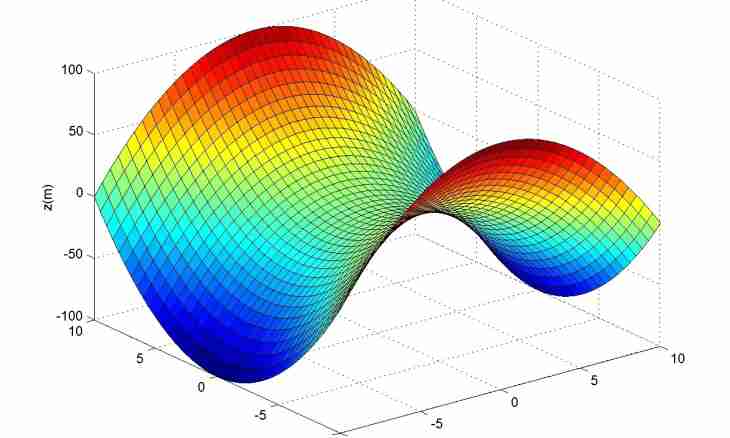Let some function set analytically, that is expression of a type of f is given (x). It is required to investigate function and to calculate the maximum value which it accepts on the set piece [a, b].
Instruction
1. First of all it is necessary to establish whether the set function on all piece is defined [a, b] and if it has points of a gap, then what sort these gaps. For example, the f (x) function = 1/x has neither maximum, nor minimum value at all on a piece [-1, 1] as in a point x = 0 aspires to plus infinity on the right and to minus infinity at the left.
2. If the set function — linear, that is is set by the equation of a type of y = kx + b where k ≠ 0, then it on all the range of definition monotonously increases if k> 0; and monotonously decreases if k 0; and f(a), if k
The following step — a function research on extrema. Even if it is established that f(a)> f(b) (or on the contrary), function can reach great values in a maximum point.
To find a maximum point, it is necessary to resort to the help of a derivative. It is known that if in x0 point the f (x) function has an extremum (that is a maximum, a minimum or a stationary point), then its derivative f ′ (x) in this point addresses in zero: f ′ (x0) = 0. For definition what of three types of an extremum is in the found point it is necessary to investigate behavior of a derivative in its vicinities. If it changes the sign from plus for minus, that is monotonously decreases, then in the found point the initial function has a maximum. If the derivative changes the sign from minus for plus, that is monotonously increases, then in the found point the initial function has a minimum. If, at last, the derivative does not change the sign, then x0 is a stationary point for initial function.
When it is difficult to calculate signs of a derivative in the neighborhood of the found point, it is possible to use the second derivative f ′′ (x) and to define the sign of this function in x0 point: - if f ′′ (x0)> 0, then found a minimum point; - if f ′′ (x0)
For the final decision of a task it is necessary to choose maximum of values of the f (x) function on the ends of a piece and in all found maximum points.
3. The following step — a function research on extrema. Even if it is established that f(a)> f(b) (or on the contrary), function can reach great values in a maximum point.
4. To find a maximum point, it is necessary to resort to the help of a derivative. It is known that if in x0 point the f (x) function has an extremum (that is a maximum, a minimum or a stationary point), then its derivative f ′ (x) in this point addresses in zero: f ′ (x0) = 0. For definition what of three types of an extremum is in the found point it is necessary to investigate behavior of a derivative in its vicinities. If it changes the sign from plus for minus, that is monotonously decreases, then in the found point the initial function has a maximum. If the derivative changes the sign from minus for plus, that is monotonously increases, then in the found point the initial function has a minimum. If, at last, the derivative does not change the sign, then x0 is a stationary point for initial function.
5. When it is difficult to calculate signs of a derivative in the neighborhood of the found point, it is possible to use the second derivative f ′′ (x) and to define the sign of this function in x0 point: - if f ′′ (x0)> 0, then found a minimum point; - if f ′′ (x0)
For the final decision of a task it is necessary to choose maximum of values of the f (x) function on the ends of a piece and in all found maximum points.
6. For the final decision of a task it is necessary to choose maximum of values of the f (x) function on the ends of a piece and in all found maximum points.

